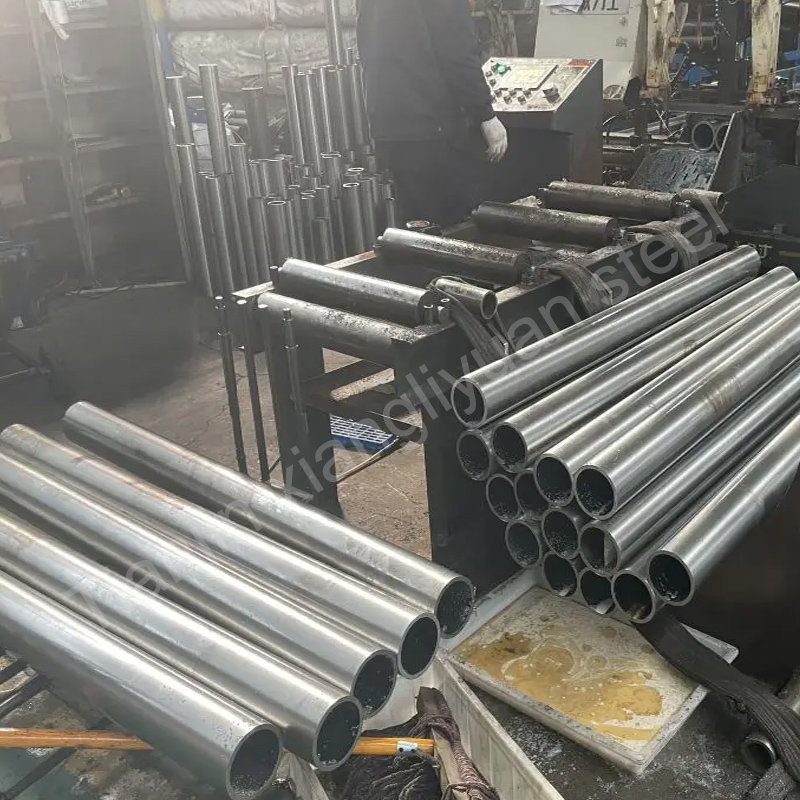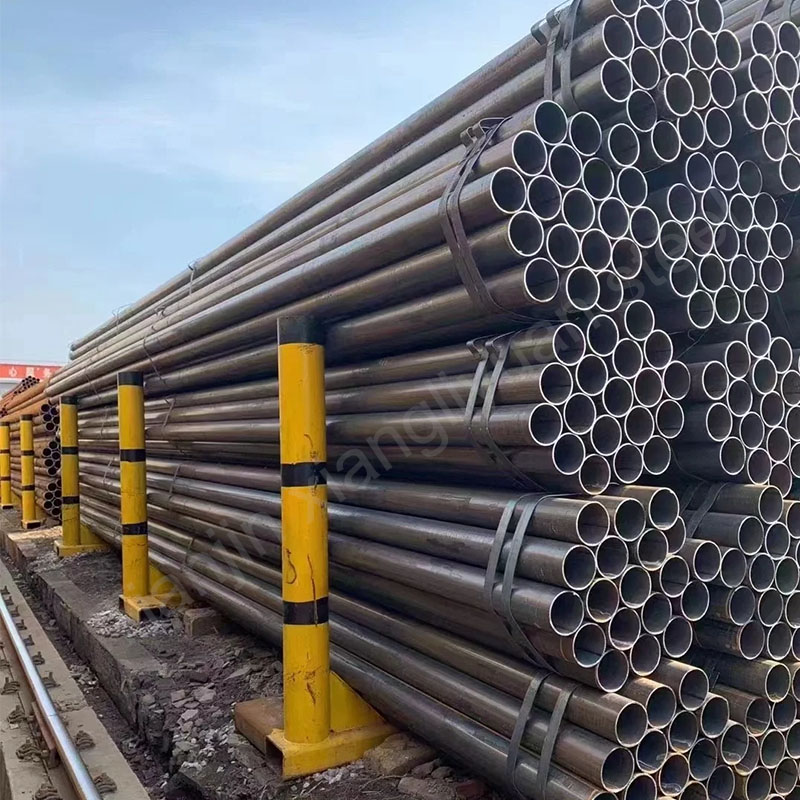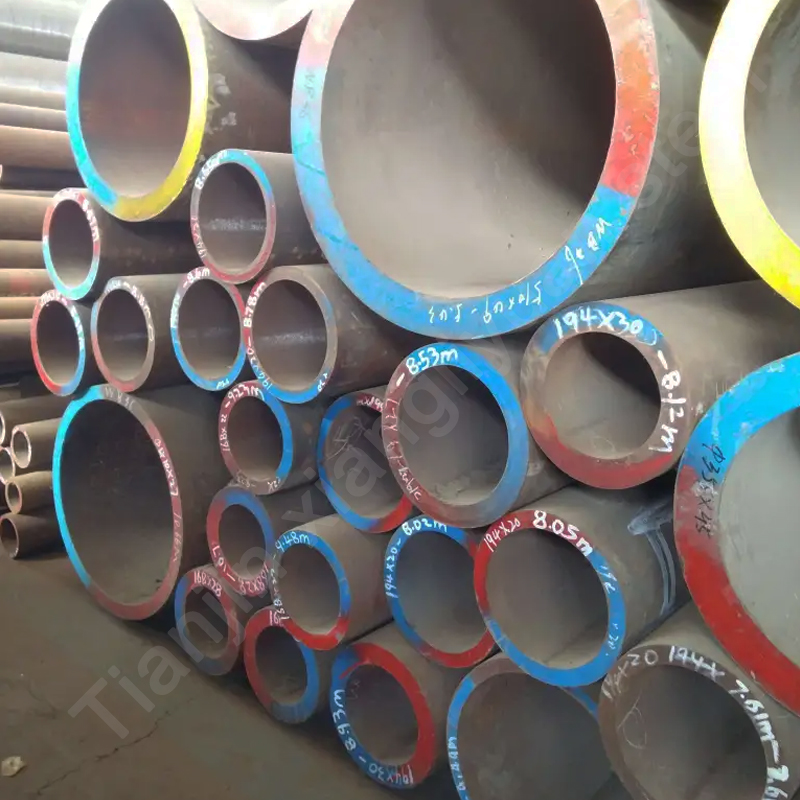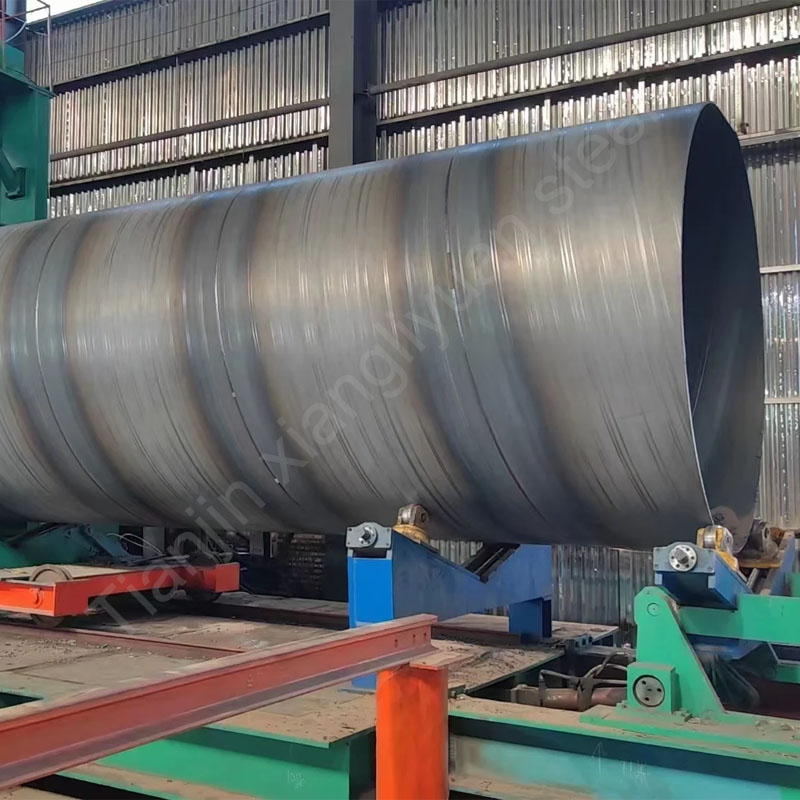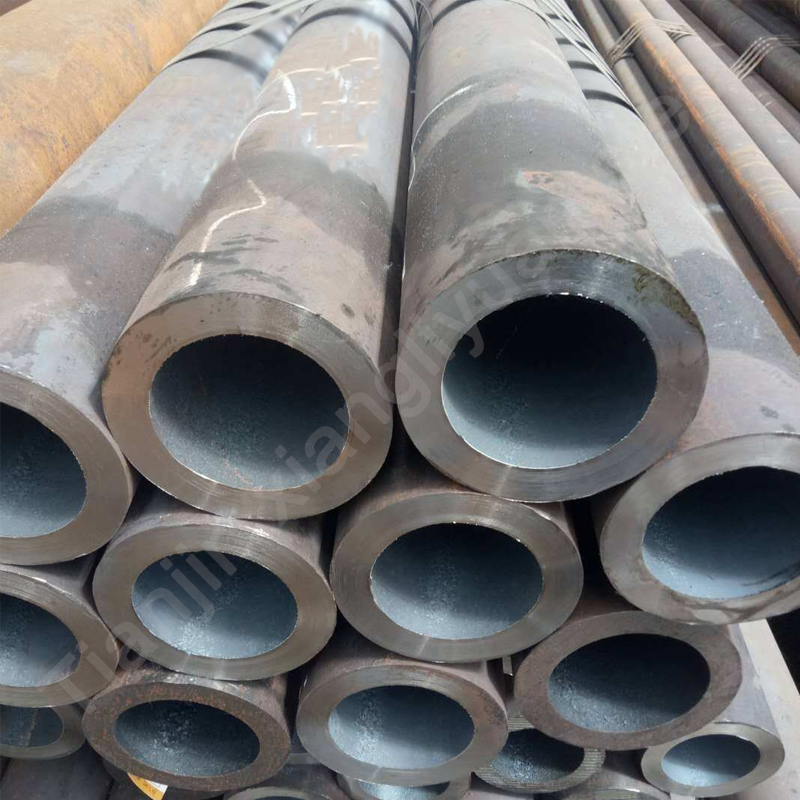Honed tube is a high-precision steel tube used in hydraulic and pneumatic systems. It is widely used in oil cylinders and cylinders of various mechanical equipment. Due to its high finish and precise dimensional control on the inner surface, the honed tube plays an important role in improving the working efficiency of the hydraulic system and extending the service life of the equipment.
The production process of the honed tube is usually divided into several key steps:
Pipe selection: First, select suitable steel, common ones are carbon steel, alloy steel, stainless steel, etc. These materials are selected according to customer needs and application scenarios.
Cold drawing: After selecting the pipe, cold drawing is first performed. This process can adjust the outer diameter and wall thickness of the pipe to the requirements close to the finished product and improve the mechanical properties of the steel pipe. After cold drawing, the dimensional accuracy and surface quality of the steel pipe are improved to a certain extent.
Inner hole processing: Before honing, the inner hole of the pipe is rough-machined first, and the inner surface is preliminarily processed using a boring machine or a rolling machine to make the inner wall meet certain precision requirements. This step can remove the rough inner surface and prepare for the honing process.
Honing treatment: Honing is the core step of the entire production process. Use a honing tool with abrasive particles to grind the inner hole surface with high precision to make the inner wall finish reach Ra0.2~0.4μm. At the same time, honing can ensure the roundness and dimensional accuracy of the inner hole, and the error is usually controlled within 0.02mm. This process is crucial to the sealing performance of the hydraulic cylinder.
Surface treatment: To prevent rust and corrosion on the surface of the steel pipe, the surface of the steel pipe is usually galvanized, phosphated or oxidized after honing. This link not only increases the durability of the product, but also improves the overall appearance.
Honing tubes usually use materials with high strength and good wear resistance. Common materials are:
Carbon steel: such as 20# and 45# steel, which are the most widely used and suitable for ordinary hydraulic systems and cylinders.
Alloy steel: such as 16Mn and 27SiMn, this type of steel has higher strength and toughness and is suitable for high-pressure working environments.
Stainless steel: such as 304 and 316L, mainly used in environments with high corrosion resistance requirements, especially in food machinery and chemical equipment.
Commonly used steel grades are as follows:
ST52 (DIN2391 standard): widely used in medium and high pressure hydraulic systems, with good mechanical properties and processability.
E355 (EN10305 standard): suitable for precision machinery, especially in the fields of automobile manufacturing and aerospace.
20# steel: high cost performance, suitable for general hydraulic cylinders.
45# steel: medium carbon steel, good strength and toughness, suitable for high-strength hydraulic systems.
The production and use of honing tubes need to meet the standard requirements of various countries and regions. The following are common international standards:
DIN2391: German industrial standard, covering high-precision cold-drawn seamless steel pipes, widely used in the European market.
EN10305: EU standard, covering precision steel pipes, especially cold-drawn pipes used in hydraulic and pneumatic systems.
ISO 9001: Although ISO 9001 is not a specific standard for honed tubes, it is an important standard for the quality management system in the production process to ensure product consistency and reliability.
ASTM A519: American standard for seamless mechanical tubes of carbon steel and alloy steel, commonly used in the North American market.
GB/T8713: Chinese national standard for precision seamless steel tubes used in hydraulic and pneumatic systems.
These standards mainly specify the technical requirements for dimensional tolerances, surface quality, material properties, etc. of honed tubes, ensuring their versatility and reliability in the global market.
Due to the high finish and high precision of the inner surface of the honed tube, it is widely used in many industries. The following are several main uses:
Hydraulic cylinder: The most common application of honed tubes is in hydraulic cylinders. Hydraulic cylinders are the core components of many mechanical equipment. The finish and dimensional accuracy of the inner wall of the honed tube can ensure the smooth movement of the piston and improve the sealing and working efficiency of the hydraulic system.
Cylinders: Cylinders in pneumatic systems also often use honing tubes, especially in industrial equipment with high requirements, honing tubes can improve the response speed and accuracy of the system.
Engineering machinery: In heavy machinery and equipment such as excavators and loaders, most of the key components of the hydraulic system rely on the excellent performance of honing tubes.
Automobile manufacturing: In the automotive industry, the application of honing tubes in hydraulic transmission systems, shock absorbers and suspension systems is very common. It can effectively improve the handling and comfort of vehicles.
Aerospace: In some high-precision aerospace equipment, honing tubes are also widely used to ensure the stable operation of high-demand hydraulic systems.
As a high-precision steel pipe product, honing tubes play an irreplaceable role in hydraulic and pneumatic systems. Its production process is complex and the precision requirements are high. It is suitable for various high-strength and high-precision mechanical equipment. The selection of different materials and steel grades enables honing tubes to adapt to different working environments and pressure requirements, and the unification of international standards also provides a strong guarantee for its application in the global market. Whether in engineering machinery, automobile manufacturing, or aerospace, honing tubes have demonstrated their superior performance and broad application prospects.

